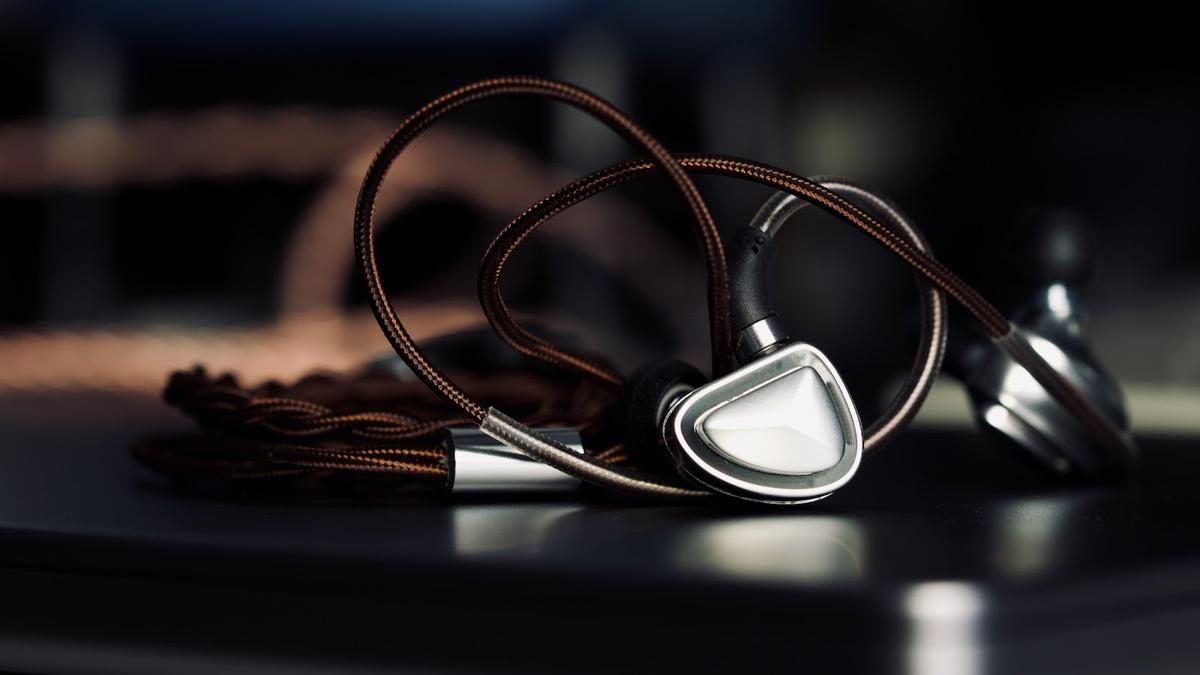HarmonicDyne’s dual dynamic driver IEMs fall short of excellence in a crowded market.
HarmonicDyne is primarily known for headphones rather than IEMs. The PD1 were its first pair of IEMs, but due to some tuning quirks, those never quite took off in terms of popularity.
- Good build quality
- Good stock cable
- Rather uncommon bright-neutral tuning
- Good stage width and imaging
- Coherent sound for a dual-driver setup
- Bass slam is lacking
- Lower-treble peak can be jarring in poorly mastered tracks
- Lacks upper-treble extension
- Some nasality in deep male vocals
- Not the best value-for-money given the competition
Enter the HarmonicDyne Devil, a second attempt at IEMs by the brand. The marketing pitch boasts two years of R&D and a novel diaphragm material to enhance the sound further.
Let’s see how much of that translates into real-world performance.
Technical Specifications
- Form: IEM
- Drivers: 2 x 10mm LDM dynamic driver
- Impedance (Ohm): 16 ohms
- Sensitivity (dB): 123 dB/Vrmw
- Frequency Response (Hz): 5 Hz – 40 kHz
- Total Harmonic Distortion (THD): < 0.057% @ 1kHz, 94dB SPL
- Removable Cable: Y
- Source Jack: 3.5mm
- Cup/Shell Jack: mmcx
Packaging
The Devil arrive in a fairly heavy package. The heft was surprising because the IEMs and accessories do not weigh much.
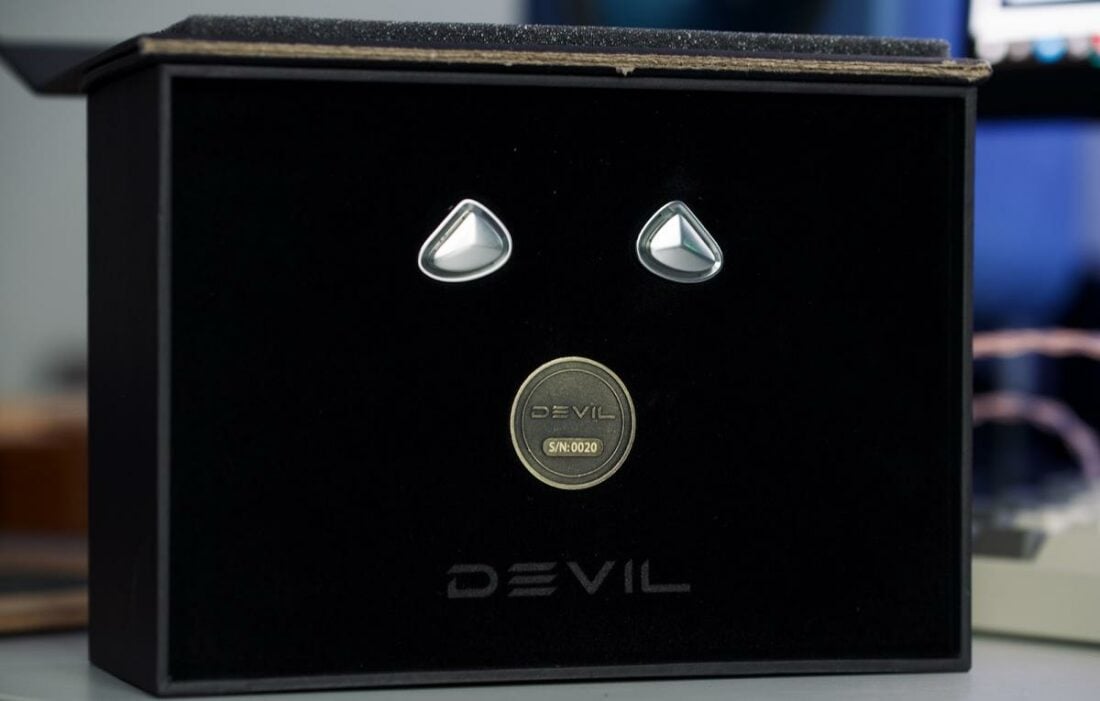
In the box
- HarmonicDyne Devil IEMs
- 7 pairs of silicone tips
- Coin with a serial number etched on it
- Carrying case
- 2-core OCC copper cable with mmcx connectors and 3.5mm or 4.4mm plug
- 6.35mm adapter
The carrying case is decent and gets the job done. The ear tips, though, proved useless for me. I could not get a good seal with those included, so I had to resort to third-party alternatives.
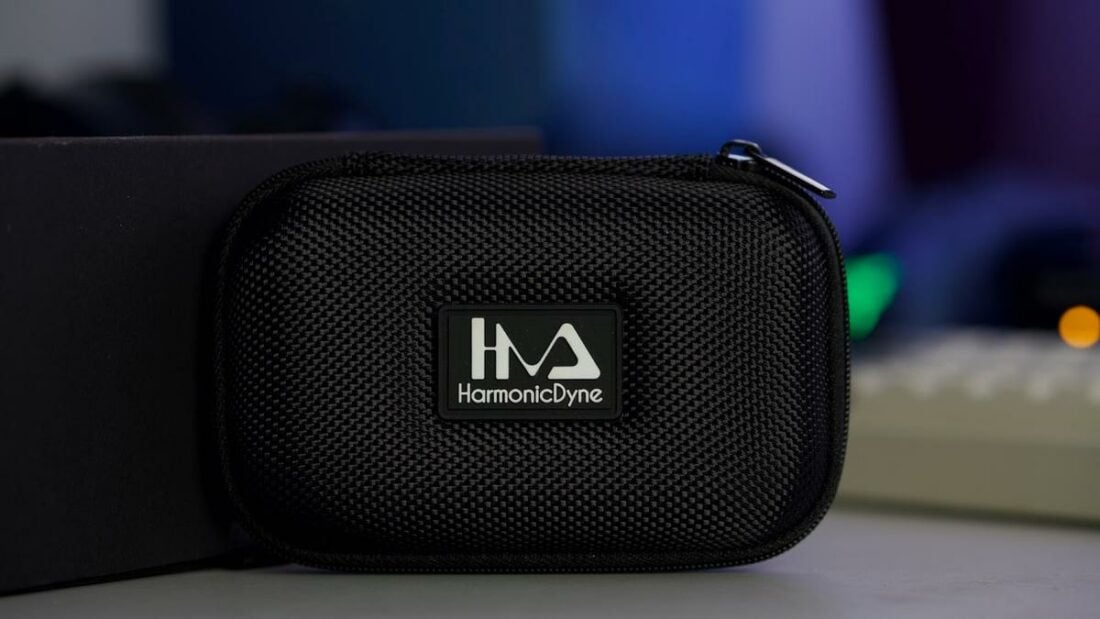
Cable
The stock cable is okay and should be fine for most users.
It is a two-core design with cloth braiding. Purchasers can select between 3.5mm and 4.4mm terminations. The cable exhibits some microphonics (which is the case for most fabric-sheathed cables), but it’s not too distracting.
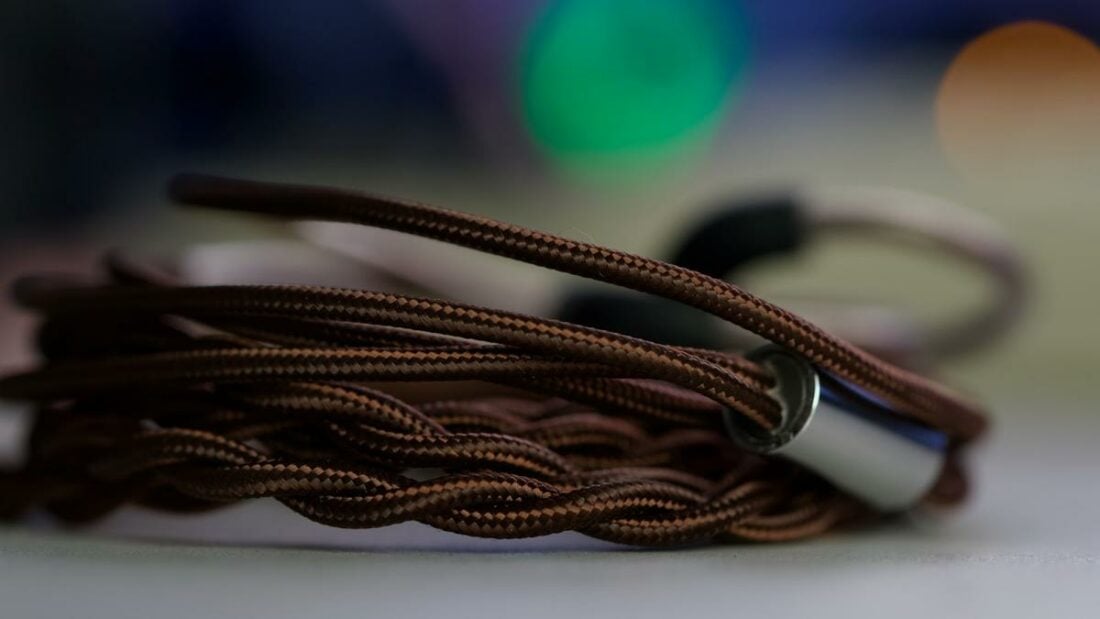
Design
The HarmonicDyne Devil adopt a no-frills, minimalist approach to their aesthetics.
The entire build is CNC machined Aluminum. It’s a two-piece shell design, and the general fit and finish suit the price.
There is one vent on the inner side, while the back houses three elongated slits, seemingly used to tune the drivers.
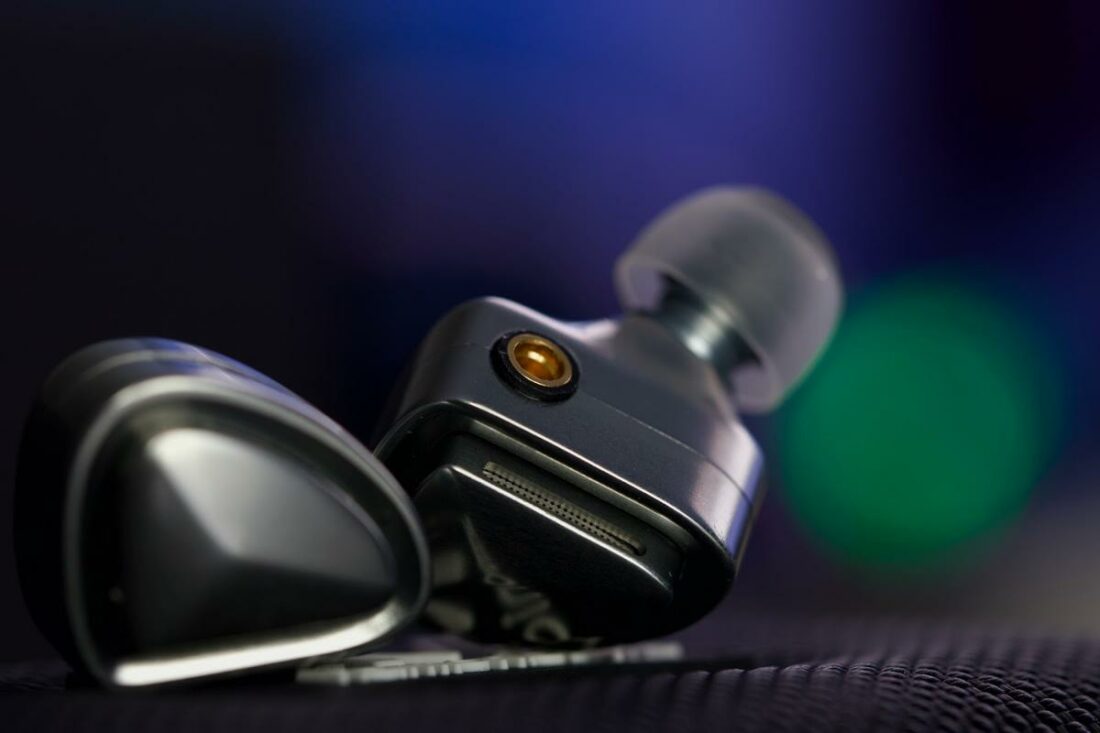
The nozzle is on the longer side, and ear tips do not slide all the way down. As such, deep fit is a no-go. Finally, the mmcx connector seems sturdy and did not loosen up after multiple cable swaps.
All in all, a good build quality, as is expected in the mid-price segment.
Comfort and isolation
Comfort is good, but isolation is below average due to the “shallow fit” design.
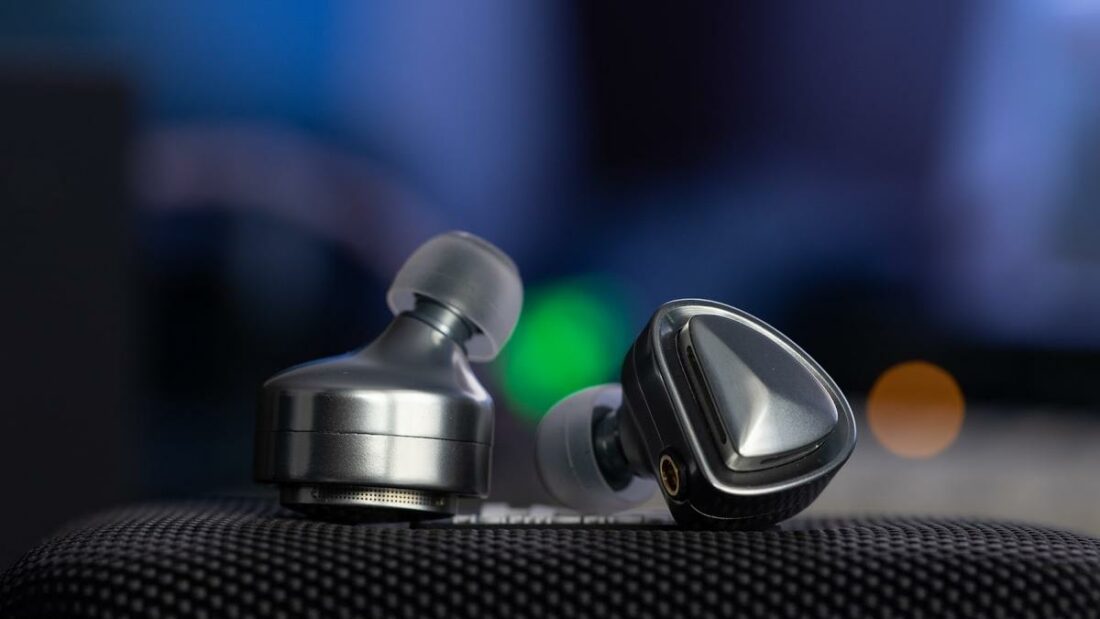
Internals
The HarmonicDyne Devil utilize two 10mm dynamic drivers with “LDM” diaphragms.
HarmonicDyne Devil Sound
The HarmonicDyne Devil have a neutral-bright signature.
The bass is not too elevated in the sub-bass region, which is a departure from popular tuning tendencies.
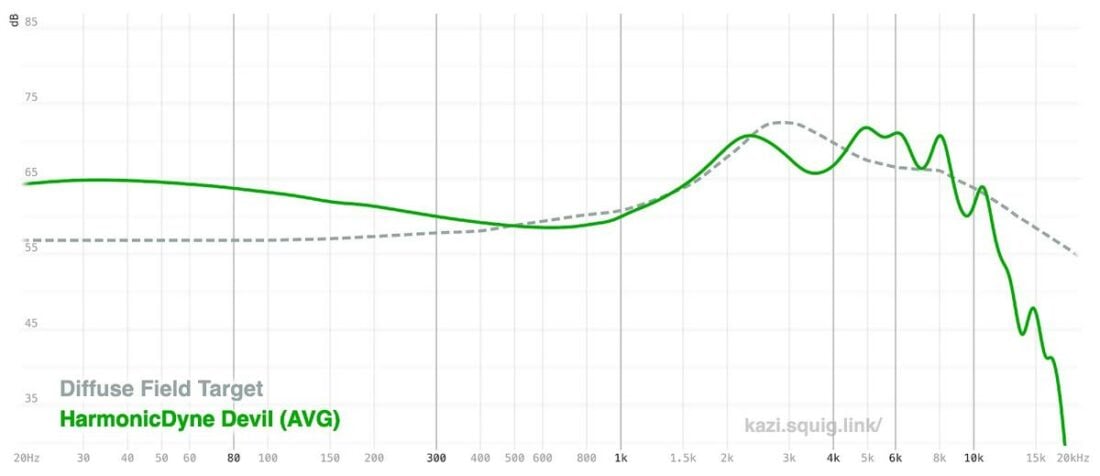
Bass
The bass has fast attack, and natural decay, and the sub-bass rumble is noticeable though it won’t rattle your brain. The mid-bass punch also adds body and physicality to the lower region without becoming prominent.
Bass has decent texture, but some of their peers offer better-textured bass. Moreover, those looking for physicality and slam will be disappointed.
Midrange
Lower-mids exhibit some thinness due to the “scoop” between 500 – 1000Hz. Upper mids are prominent, with almost 10dB of boost compared to lower-mids, but the mid-treble peaks tend to balance things out somewhat.
High-pitched female vocals in tracks with sparse instrumentation can lead to shoutiness, but such instances were rare. Acoustic instruments have a nice “bite” to their attack, as heard on Damien Rice’s Cannonball. Heavy guitar riffs exhibit their characteristic energy.
However, keyboards and pianos could do with more note weight. Baritone vocals also lose some of their heft due to the tuning choices.
Treble
The treble has a noticeable lack of air.
To compensate for this, HarmonicDyne tuned the Devil to have more lower and mid-treble emphasis. There is no lack of energy as a result. The initial hit of cymbals is well defined, albeit ensuing resonance is missing.
For a bright-neutral pair of IEMs, the lack of airiness seems like a strange decision, especially since there are two drivers, and the second one, in theory, should take care of the treble (including upper-treble).
The HarmonicDyne Devil sound surprisingly coherent despite having two separate drivers.
Soundstage and imaging
The staging is fairly wide and tall, though stage depth could be better. Imaging is also good, with the ordinal placement of instruments being noticeable in tracks like Yosi Horikawa’s Crossing.
Dynamics and speed
Macrodynamic punch is lacking due to the “reserved” sub-bass tuning. Sudden bass drops lack physicality and punch.
Microdynamics are rendered better, with subtle shifts in volume being easy to pick up. The driver is fast enough to keep up with complex tracks, though some of the competition best them in this regard.
Comparisons
Vs Sennheiser IE 200
The Sennheiser IE 200 retail for a lower price than the HarmonicDyne Devil and sport a single 7mm dynamic driver.
In terms of build, the HarmonicDyne IEMs feel more premium and substantial in hand. Comfort, on the other hand, is far superior on the IE 200, with the IEMs almost disappearing while worn. Isolation, too, is a strength of the Sennheiser IEMs.
The IE 200 depends on positioning the stock tips (which cover a bass vent if pushed fully downwards) to tune the bass and the upper-mids. The Devil, meanwhile, lack such tuning flexibility.
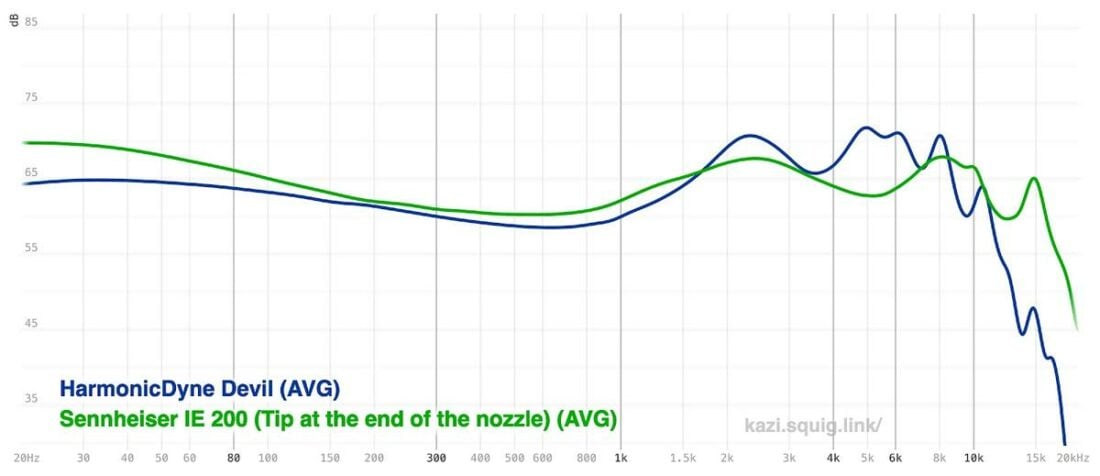
In terms of sound, these IEMs venture in different directions. The HarmonicDyne Devil showcase more clarity due to their upper-midrange boost, whereas the IE 200 go for a dense, smooth tuning.
The lower-treble tuning on the IE 200 is more conducive to long-term listening, and the upper-treble is noticeably more extended. This added airiness can sometimes be fatiguing, though the same applies to the boosted presence region on the Devil.
The soundstage is wider on the HarmonicDyne IEMs, and the imaging is slightly more precise. Mids are the bread and butter of the IE 200, with better timbre, a fuller-sounding lower-midrange, and a complete lack of shout.
Overall, I like the IE 200 for most of my playlist. The HarmonicDyne Devil fare better with acoustic tracks or in cases where the added clarity clears up a busy mix.
Where to Buy
Conclusion
HarmonicDyne’s second attempt at IEMs left me with mixed feelings. The tuning differs from most current releases, and the driver setup seems good on paper.
Sadly, the actual performance is a mixed bag. I like the bass’s linearity and the mids’ clarity, but the mid-treble focused signature with a lack of airiness feels like a puzzle with the final pieces missing.
Moreover, the competition is stronger than ever, and merely being good at a few aspects does not make new releases stand out as it did in the yesteryears.
So the HarmonicDyne Devil fall short of being great. I hope HarmonicDyne works on the upper-treble in the next release, and things may become far more interesting.
